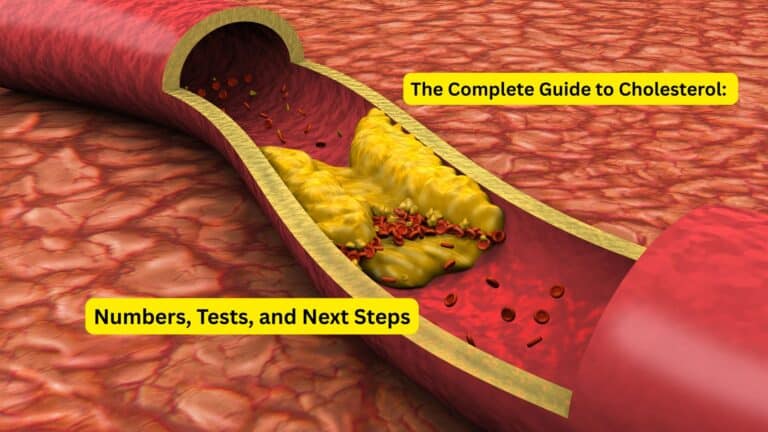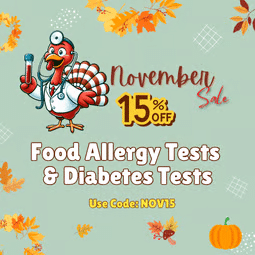Food allergies affect millions of Americans, yet widespread misconceptions continue to create confusion and potentially dangerous situations for those living with these conditions. From beliefs about who can develop allergies to misunderstandings about treatment and prevention, these myths can lead to inadequate preparation, improper management, and unnecessary risks. The consequences of believing false information about food allergies extend far beyond inconvenience—they can literally be life-threatening.
Separating fact from fiction becomes crucial when dealing with conditions that can trigger severe, unpredictable reactions. Understanding the truth about food allergies empowers individuals, families, and communities to make informed decisions about testing, prevention, emergency preparedness, and daily management strategies that can make the difference between safety and serious health consequences.
Introduction
Food allergies represent complex immune system responses that occur when the body mistakenly identifies harmless food proteins as dangerous invaders. Despite affecting approximately 32 million Americans, these conditions remain surrounded by persistent myths that can compromise safety and effective management. The spread of misinformation about food allergies creates particular challenges because unlike many health conditions, allergic reactions can be immediate, severe, and potentially fatal.
The importance of accurate information cannot be overstated when dealing with food allergies. Misconceptions about severity, triggers, prevention methods, and emergency treatment can lead to delayed responses, inadequate preparation, or false confidence in unsafe situations. By examining common myths alongside evidence-based facts, individuals and families can develop more effective strategies for living safely with food allergies while avoiding the pitfalls created by widespread misinformation.
Myth 1: Food Allergies Equal Food Intolerances
One of the most persistent and potentially dangerous misconceptions equates food allergies with food intolerances, leading people to underestimate the severity of true allergic reactions. This confusion stems from the fact that both conditions can cause uncomfortable symptoms after eating certain foods, but the underlying mechanisms and potential consequences differ dramatically.
The Critical Distinction
Food allergies involve the immune system and can be life-threatening, while intolerances are digestive issues that don’t involve immune responses. When someone with a food allergy consumes their trigger food, their immune system launches an attack that can affect multiple organ systems simultaneously. This response can escalate rapidly from mild symptoms to anaphylaxis, a severe reaction that can cause breathing difficulties, cardiovascular collapse, and death within minutes.
Food intolerances, in contrast, typically involve the digestive system’s inability to properly process certain food components, such as lactose in dairy products. While uncomfortable, these reactions rarely pose immediate life-threatening risks and generally remain confined to gastrointestinal symptoms like bloating, gas, or diarrhea.
Why This Myth Matters
The tendency to minimize food allergies by comparing them to intolerances can lead to inadequate emergency preparedness, casual attitudes toward allergen avoidance, and delayed medical intervention during serious reactions. Understanding this distinction helps ensure appropriate precautions and responses for each condition.
Myth 2: Allergic Reactions Always Get Worse Over Time
Many people believe that food allergic reactions inevitably become more severe with each exposure, creating anxiety about the future while potentially leading to either excessive worry or paradoxically, complacency about current safety measures. This myth oversimplifies the complex nature of allergic responses and their unpredictable patterns.
The Reality of Reaction Variability
Allergic reactions can vary in severity and are unpredictable with each exposure. Multiple factors influence reaction severity, including the amount of allergen consumed, individual health status at the time of exposure, concurrent medications, alcohol consumption, exercise timing, and even stress levels. A person might experience a mild reaction one time and a severe reaction the next, or vice versa, making it impossible to predict future responses based on past experiences.
Some individuals may indeed experience increasingly severe reactions over time, while others maintain consistent response patterns, and still others might even develop decreased sensitivity in certain circumstances. The unpredictable nature of allergic reactions underscores why emergency preparedness remains essential regardless of previous reaction history.
Implications for Management
This variability means that every exposure carries potential risks, regardless of previous mild reactions. It also explains why allergists recommend carrying emergency medications and having action plans even for individuals who have only experienced minor symptoms in the past.
Myth 3: Only Children Get Food Allergies
The perception that food allergies primarily affect children reflects outdated understanding of these conditions and fails to acknowledge the significant number of adults who develop allergies later in life. This misconception can delay diagnosis and appropriate management for adult-onset allergies, while also creating false security among adults who assume they’re immune to developing new allergies.
Adult-Onset Allergies Are Real
Adults can develop new food allergies, and adult-onset cases are increasingly recognized by medical professionals. Research indicates that approximately half of adults with food allergies developed at least one of their allergies during adulthood, with shellfish being the most common new allergy to emerge in adult years. Factors contributing to adult-onset allergies include environmental exposures, hormonal changes, stress, illness, and geographic relocations that introduce new allergens.
Adult food allergies can develop suddenly, even in people who have consumed trigger foods safely for decades. These new allergies often present with severe symptoms from the first reaction, making recognition and proper medical evaluation crucial for adult safety.
Recognition Challenges
Adults experiencing new food allergy symptoms might dismiss them as temporary illness, stress-related reactions, or food poisoning, potentially delaying proper diagnosis and emergency preparedness. Healthcare providers and individuals should maintain awareness that food allergies can develop at any age.
Myth 4: Cooking Makes Allergens Safe
The belief that cooking eliminates allergens creates a false sense of security that can lead to serious reactions among individuals who consume cooked versions of their trigger foods. This myth likely stems from the fact that cooking does destroy some unstable proteins, but unfortunately, most major food allergens remain intact and dangerous even after extensive cooking.
Heat-Stable Allergens
Many allergenic proteins, particularly those in peanuts and tree nuts, are heat-stable and maintain their ability to trigger reactions even after cooking. Proteins in milk, eggs, fish, shellfish, soy, and wheat can also survive various cooking methods, though some may become less allergenic under certain conditions. The persistence of these proteins means that baked goods containing allergens, cooked shellfish, and processed foods with allergenic ingredients remain dangerous for sensitive individuals.
Even processes like roasting, which might reduce allergenicity in some cases, cannot guarantee safety for people with established food allergies. The variability in cooking methods, temperatures, and individual sensitivity levels makes it impossible to rely on cooking as a safety measure.
Safe Cooking Practices
For families managing food allergies, safe cooking involves complete allergen avoidance rather than attempting to neutralize allergens through cooking. Cross-contamination prevention during cooking becomes more important than the cooking process itself for ensuring meal safety.
Myth 5: Peanut Is the Most Dangerous Allergen
Peanut allergies receive significant media attention and public awareness, leading many to believe they represent the most dangerous type of food allergy. While peanut allergies are indeed serious and can cause severe reactions, this focus can create misconceptions about the relative risks of other allergens and potentially lead to inadequate precautions for non-peanut allergies.
Equal Opportunity Severity
Peanut allergies are serious, but other allergens like cashews, milk, and eggs can cause equally severe reactions. Tree nuts, shellfish, fish, and even seemingly mild allergens like milk and eggs have all caused fatal anaphylactic reactions. The severity of allergic reactions depends more on individual sensitivity and reaction patterns than on the specific allergen involved.
Cashews, for example, often cause more severe reactions than peanuts in sensitive individuals, while shellfish allergies tend to persist throughout life and can trigger severe responses. Milk and egg allergies, though often considered childhood conditions, can also cause life-threatening reactions when they persist into adulthood or develop later in life.
Avoiding Hierarchy Thinking
Creating hierarchies of allergen danger can lead to inadequate preparation for “less dangerous” allergens or unnecessary anxiety about “more dangerous” ones. Each individual’s allergy profile requires personalized assessment and management regardless of general perceptions about specific allergens.
Myth 6: If You’re Allergic to One Tree Nut, You’re Allergic to All
The assumption that tree nut allergies always involve multiple nuts leads to both unnecessary dietary restrictions for some individuals and potentially inadequate testing for others. While cross-reactivity between tree nuts does occur, the relationships between different nuts are more complex than simple all-or-nothing patterns.
Individual Nut Sensitivities
Each tree nut can trigger different allergic responses, and sensitivity to one doesn’t automatically indicate allergy to all others. Walnuts, cashews, almonds, pecans, pistachios, Brazil nuts, hazelnuts, and macadamia nuts each contain different protein profiles that may or may not cross-react in sensitive individuals. Some people react to only one or two specific nuts while tolerating others safely.
However, cross-contamination during processing and packaging means that avoiding all tree nuts often becomes the practical recommendation for individuals allergic to any tree nut, regardless of their specific sensitivity pattern. This precautionary approach helps prevent accidental exposure while acknowledging the complexity of tree nut processing and distribution.
Testing and Management
Proper allergy testing can help identify specific tree nut sensitivities, allowing for more precise dietary management when medically appropriate. However, the practical challenges of avoiding cross-contamination often make complete tree nut avoidance the safest approach.
Myth 7: Food Allergy Reactions Always Require Multiple Exposures
The belief that allergic reactions only develop after repeated exposures to allergens can create dangerous complacency during first encounters with potential trigger foods. This myth may stem from confusion about how immune systems develop sensitivity, but it fails to account for the reality that severe reactions can occur during initial exposures.
First Exposure Risks
Severe allergic reactions can occur even during the first known exposure to an allergen, particularly in individuals who may have had previous unrecognized exposures or who have developed sensitivity through environmental contact. Some individuals experience anaphylaxis during their first conscious encounter with foods like shellfish or tree nuts, despite having no previous known reactions.
The immune system can also become sensitized through non-dietary exposures, such as skin contact with allergens or inhalation of food particles, making it possible for the first intentional consumption to trigger severe reactions. This mechanism explains why some children react severely to peanuts during their first known exposure, despite having been sensitized through environmental contact or cross-contamination.
Implications for Safety
This reality emphasizes the importance of introducing new foods carefully, particularly those known to be common allergens, and being prepared for potential reactions even during first exposures. It also highlights why family history and environmental factors should be considered when evaluating allergy risks.
Myth 8: All Allergy Tests Are Equal
The proliferation of various allergy testing options has created confusion about the accuracy, reliability, and appropriate use of different testing methods. This confusion can lead to misinterpretation of results, unnecessary dietary restrictions, or false reassurance about allergy risks.
Professional Evaluation Necessity
Proper allergy diagnosis requires healthcare professional evaluation, as random broad panel tests may provide misleading results. While blood tests and skin tests can provide valuable information about immune system responses to specific allergens, interpreting these results requires medical expertise and consideration of clinical history, symptoms, and other factors.
Some testing methods, particularly those marketed directly to consumers, may detect sensitivity markers that don’t correlate with actual allergic reactions. Positive test results don’t always indicate clinically relevant allergies, while negative results don’t guarantee safety in all circumstances.
Appropriate Testing Approaches
Effective allergy evaluation combines multiple assessment methods, including detailed medical history, physical examination, specific testing for suspected allergens, and sometimes supervised food challenges. This comprehensive approach helps distinguish between true allergies, cross-reactivities, and non-allergic sensitivities.
The Role of Epinephrine
Emergency treatment for severe allergic reactions often becomes surrounded by myths and misconceptions that can delay life-saving intervention. Understanding the proper role of epinephrine in allergy management represents a critical component of safety planning for individuals at risk of anaphylaxis.
First-Line Emergency Treatment
Epinephrine serves as the first-line emergency treatment for anaphylaxis, with delays in administration significantly increasing risks of severe outcomes or death. Unlike antihistamines or other medications that may help with mild allergic symptoms, epinephrine directly counteracts the multiple system effects of anaphylaxis by constricting blood vessels, relaxing airway muscles, and strengthening heart contractions.
The effectiveness of epinephrine depends heavily on timing, with earlier administration generally leading to better outcomes. Waiting to see if symptoms improve, trying other treatments first, or hesitating due to concerns about epinephrine side effects can allow anaphylaxis to progress to irreversible stages.
Overcoming Administration Hesitation
Many individuals and families prescribed epinephrine auto-injectors hesitate to use them due to concerns about overreacting, side effects, or uncertainty about symptom severity. However, the risks of untreated anaphylaxis far outweigh the temporary side effects of epinephrine, and early administration often prevents progression to more severe stages of reaction.
Statistics Snapshot
Current data on food allergies provides important context for understanding the scope and impact of these conditions while dispelling misconceptions about their prevalence and characteristics. Approximately 32 million Americans, or about 10% of the population, currently live with food allergies, making these conditions far more common than many people realize.
The increasing recognition of adult-onset food allergies challenges traditional assumptions about these conditions being primarily pediatric concerns. Research indicates that adults now represent a significant portion of newly diagnosed food allergy cases, with shellfish allergies leading the category of adult-onset reactions.
These statistics underscore the importance of maintaining awareness about food allergies across all age groups and demographics, while supporting the need for accessible testing and proper medical evaluation for individuals experiencing symptoms consistent with allergic reactions.
Practical Implications
The reality of food allergies, stripped of common myths and misconceptions, creates several important considerations for individuals, families, and healthcare providers. Effective management requires understanding the true nature of these conditions and implementing evidence-based strategies for safety and quality of life.
Accurate Diagnosis and Testing
Professional allergy evaluation becomes essential for anyone experiencing symptoms consistent with food allergic reactions. Walk-In Lab’s allergy testing panels provide accessible options for initial screening and ongoing monitoring, helping individuals identify specific triggers and track changes in sensitivity over time. Proper testing, combined with medical evaluation, helps distinguish true allergies from intolerances and other conditions with similar symptoms.
Emergency Preparedness
Understanding the unpredictable nature of allergic reactions emphasizes the importance of comprehensive emergency preparedness for anyone diagnosed with food allergies. This includes carrying prescribed epinephrine auto-injectors, educating family members and close contacts about recognition and response, and developing action plans for various scenarios and settings.
Dietary Management Strategies
Effective allergen avoidance requires understanding the persistence of allergens through cooking processes, the risks of cross-contamination, and the complexity of food labeling. Rather than relying on cooking to eliminate allergens or assuming certain processing methods create safety, complete avoidance of trigger foods becomes the most reliable prevention strategy.
Education and Advocacy
Combating myths and misconceptions requires ongoing education efforts that promote accurate information about food allergies in schools, workplaces, restaurants, and communities. Supporting evidence-based allergy awareness programs helps create safer environments for affected individuals while reducing the stigma and misunderstanding that often accompanies these conditions.
FAQ Section
Are food allergies and food intolerances the same?
No, food allergies involve immune system responses and can cause life-threatening reactions, while food intolerances are digestive issues that don’t involve immune responses. This distinction is crucial because allergic reactions can escalate rapidly to anaphylaxis, requiring emergency treatment, while intolerances typically cause uncomfortable but not dangerous digestive symptoms.
Do allergic reactions always get worse with each exposure?
No, reaction severity varies unpredictably with each exposure and can be influenced by multiple factors including the amount consumed, individual health status, concurrent medications, and stress levels. A person might experience mild reactions sometimes and severe reactions other times, making emergency preparedness important regardless of previous reaction history.
Can adults develop food allergies?
Yes, adult-onset food allergies are real and increasingly recognized by medical professionals. Approximately half of adults with food allergies developed at least one allergy during adulthood, with shellfish being the most common adult-onset allergy. These allergies can develop suddenly, even in people who have safely consumed trigger foods for decades.
Does cooking food make it safe for people with food allergies?
Not always, as many allergenic proteins are heat-stable and survive cooking processes. Proteins in peanuts, tree nuts, shellfish, milk, eggs, and other major allergens often remain capable of triggering reactions even after extensive cooking, making complete avoidance the safest approach for individuals with established food allergies.
Is peanut the most dangerous allergen?
No, peanut allergies are serious but other allergens like cashews, milk, and eggs can cause equally severe reactions. The severity of allergic reactions depends more on individual sensitivity patterns than on specific allergens, with any major food allergen capable of causing life-threatening anaphylaxis in susceptible individuals.
Conclusion
Food allergy myths persist despite decades of medical research and growing awareness, creating dangerous gaps between perception and reality that can compromise safety and effective management. From misconceptions about who can develop allergies to false beliefs about prevention and treatment, these myths continue to influence decisions that can have serious consequences for individuals and families living with food allergies.
The facts about food allergies reveal conditions that are more complex, unpredictable, and widespread than many myths suggest. Adult-onset allergies are real and increasing, reaction severity remains unpredictable, cooking doesn’t eliminate most allergens, and effective management requires professional evaluation rather than assumptions based on popular misconceptions. Understanding these realities empowers better decision-making about testing, prevention, emergency preparedness, and daily management strategies.
Knowledge truly becomes the most powerful tool for living safely with food allergies, but only when that knowledge is accurate and evidence-based. Regular testing through reliable services like Walk-In Lab helps individuals confirm their allergy status, monitor changes over time, and make informed decisions about dietary management and safety planning. By separating myths from facts, individuals and families can develop more effective strategies for managing food allergies while avoiding the pitfalls created by widespread misinformation.
The path to safer living with food allergies begins with understanding the truth about these conditions and continues with proper testing, professional guidance, and comprehensive emergency preparedness based on evidence rather than myths.
This content is for informational purposes only and is not a substitute for professional medical advice, diagnosis, or treatment. Always seek the advice of your physician or other qualified health provider with any questions you may have regarding a medical condition.






